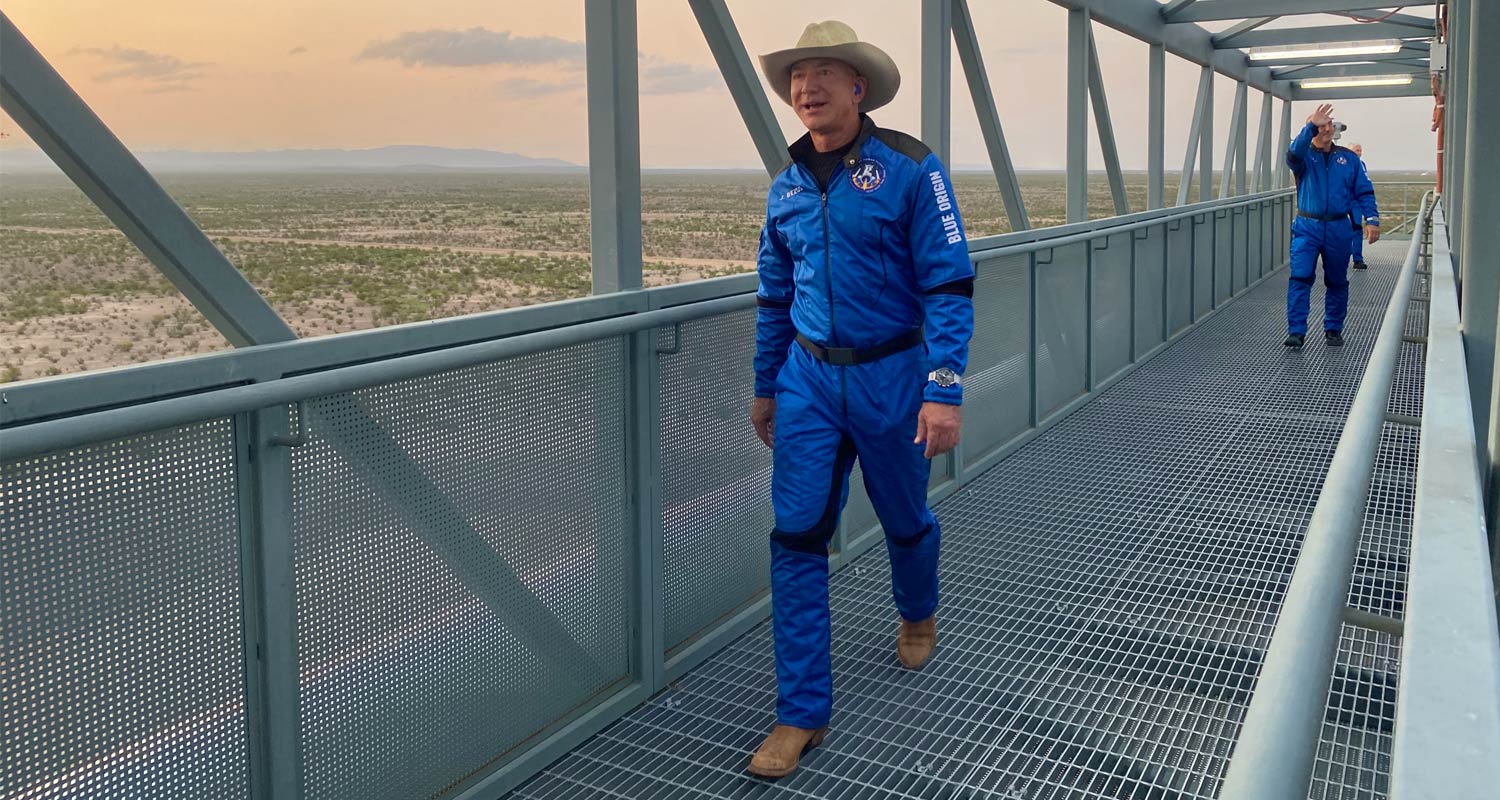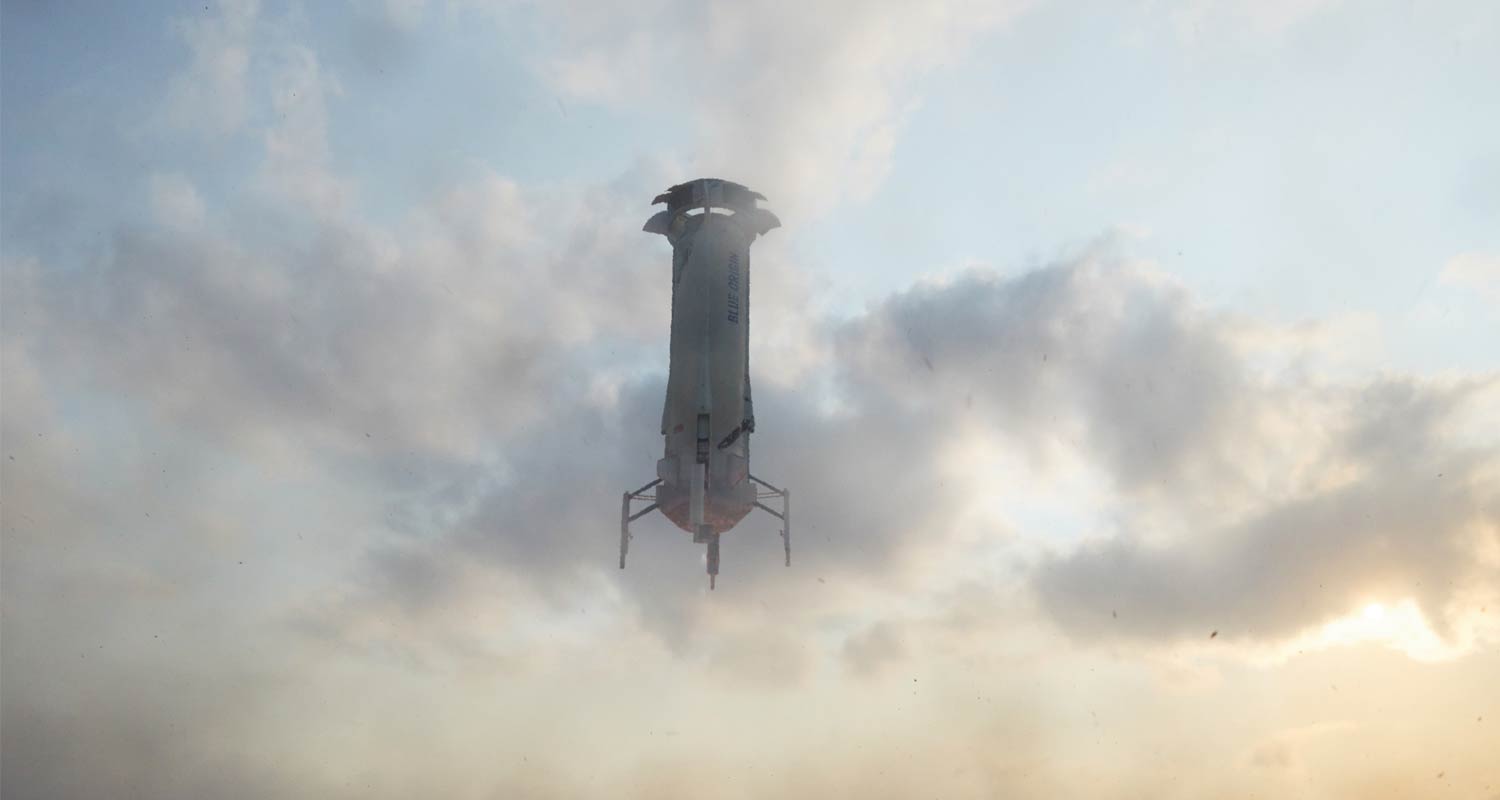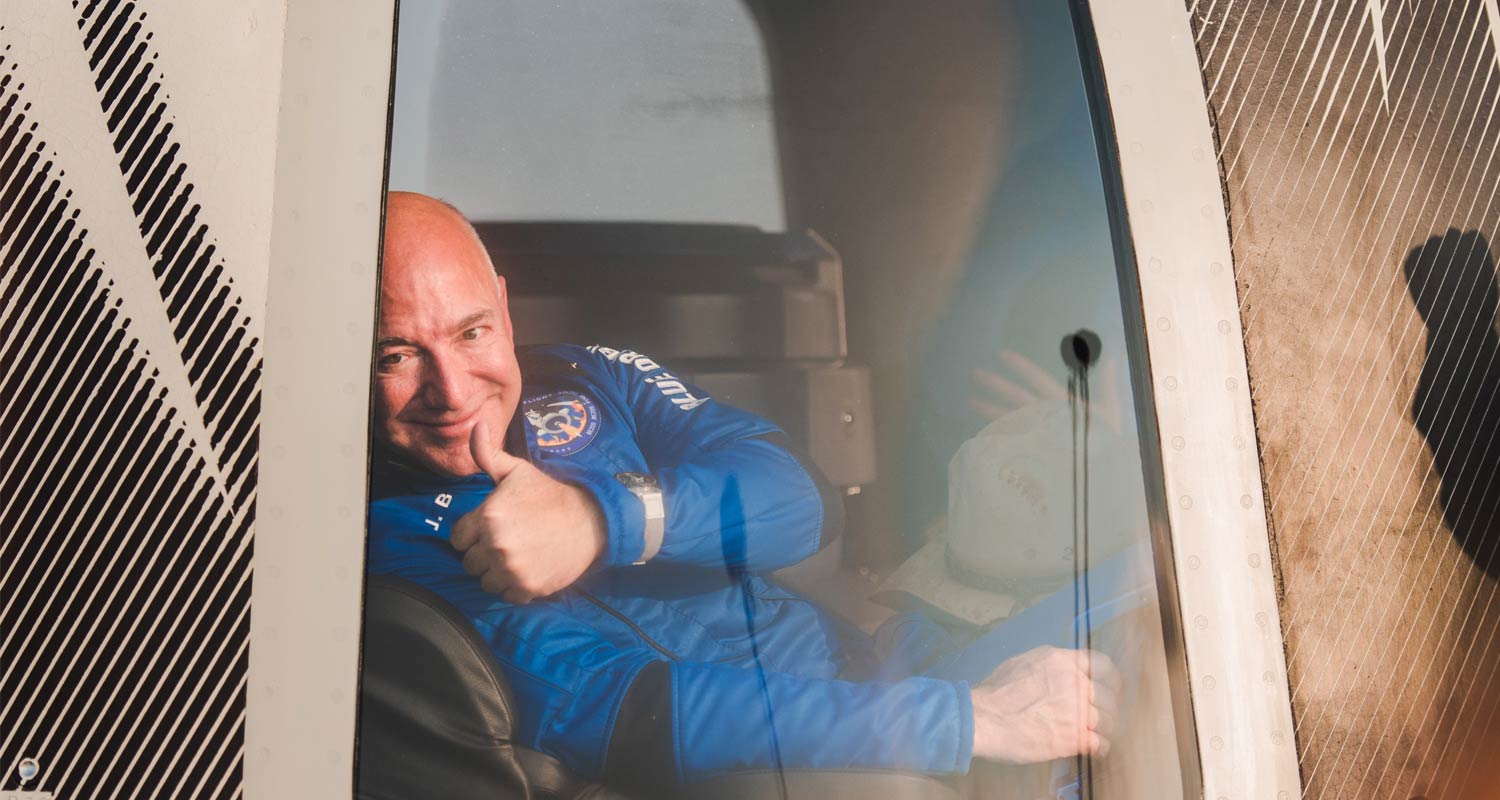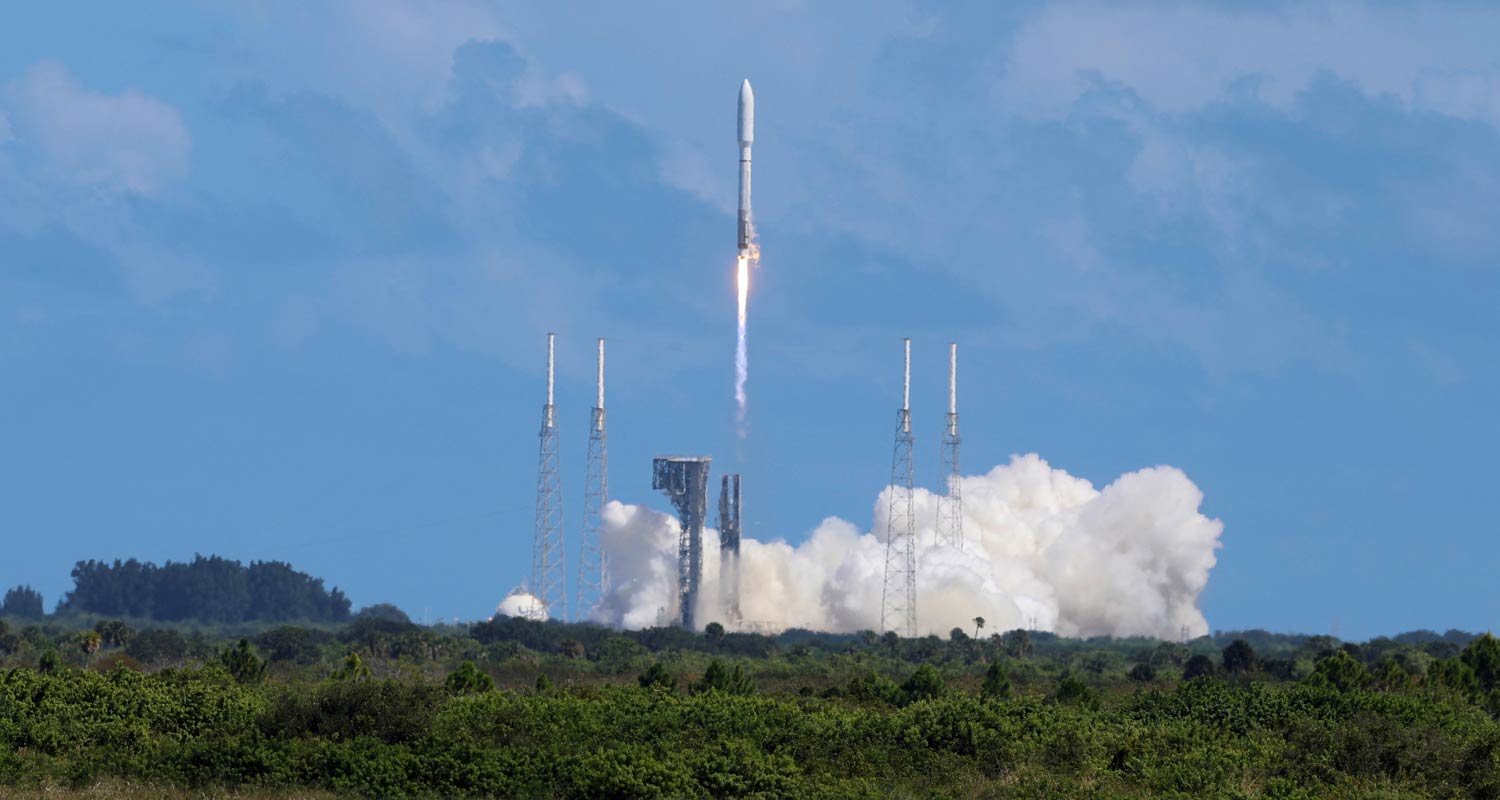
For a harrowing hour or two after Amazon.com launched its first satellites, it appeared the company might have lost one of them. The two prototypes had entered orbit over the Atlantic Ocean at 2.24pm US Eastern time on 6 October. An Amazon antenna in Mauritius made contact with both, but during a subsequent handoff to another station, only one vehicle checked in. Amazon scanned the sky behind the first satellite for a signal from the second one but heard silence.
The incident threatened to kill the mood for employees who’d gathered to celebrate the launch at Postdoc Brewing, not far from Amazon’s Seattle-area space operation. The team had spent years building satellites from scratch and endured months of delays launching them. Now that they were aloft, Amazon needed to make contact to ensure their solar panels had deployed. If not, the batteries would run out and the satellites would fail, a major setback for the retail and cloud computing giant, already a late entrant in the race to build a profitable business selling internet access from low-Earth orbit.
Inside Amazon’s Mission Operations Centre, a conference room stuffed with big video displays, computers and cases of energy drinks, satellite operations chief Yonina DeKeyser and her deputies worked to piece together the scraps of data they’d collected. Between the third and fourth contacts, the guidance, navigation and control team made the call: the missing satellite was fine. The information streaming in could only have come from a pair of healthy spacecraft. Rajeev Badyal, the project’s leader, yelled in triumph.
At the brewery, an Amazonian looking at his phone broke through the din, raising clenched fists as he bellowed “We’re power positive!” His colleagues cheered. The team would later discover that some of Amazon’s ground-based antennas had been looking in the wrong place, mistaking the second satellite to pass for the first.
Amazon executives tend to describe their satellite venture, Project Kuiper, in philanthropic terms, emphasising its potential to connect people in remote or impoverished areas with education and global commerce. Less altruistically, Amazon also hopes the US$10-billion-plus project can transform it into a global telecommunications giant. The company plans to sell rooftop antennas to individual internet users, cloud computing and data recovery services to business, and connectivity to wireless companies to link remote cell towers to their networks, starting in 2025.
Big bet
Project Kuiper is among the Seattle-based company’s biggest bets, one of just a few that have survived two years into a cost-cutting drive that has eliminated many of the speculative projects started late in Jeff Bezos’s tenure as CEO. It’s an enormous undertaking in an arena that has had more bankruptcies than successful businesses. Broadband is already widely available and, in many places where it isn’t, it’s not clear people will be able to afford space-based internet. Some Amazon observers see Project Kuiper as another front in the rivalry between Bezos and fellow billionaire Elon Musk, whose SpaceX operates the Starlink constellation of internet satellites.
Amazon is betting its system advances the state of the art, and can offer the capacity and internet speeds to compete not just with Starlink, which has a big head-start, but with terrestrial telecoms companies. At the very least, Amazon is building an alternative to Musk’s service at a time when governments and corporations alike are looking for ways to reduce their reliance on the erratic and controversial businessman.
Read: Amazon to use SpaceX to launch Kuiper satellites
Over the last two months, Amazon engineers have put their maiden satellites through a battery of tests. They’ve made a video call, bought a toy rocket set from Amazon.com and tested a system of lasers designed to extend the reach of each satellite. Now comes the really hard part. To meet the terms of its licence with regulators, Amazon has to build — and find a ride to space for — the equivalent of two satellites a day, every day, through to July 2026.
“Building two satellites is very hard,” Badyal said. “Building 3 000-plus is exponentially harder.”
Project Kuiper, named for the belt of dwarf planets, ice and rock beyond Neptune, was born of a thought experiment, according to longtime Amazon consumer electronics chief Dave Limp. Bezos had periodically asked executives to ponder far-off hurdles that might slow the company down, an exercise that led Amazon to spend billions on warehouse robots and fleets of aircraft, big rigs and delivery trucks.

About six years ago, Amazon’s leaders grew fixated on broadband internet. Their disparate range of businesses, including retail sites, film studios and business software, all depend on access to the web. “It became, if you wanted to grow, you had to find these hundreds of millions of people that are not currently Amazon customers,” Limp said in an interview. “Well, what’s the constraint to getting them there?”
Among other ideas, Amazon explored internet-broadcasting drones and balloons, approaches tried and abandoned by Facebook, now Meta Platforms, and Google. Amazon decided to deliver the internet from satellites.
The idea wasn’t novel. In the 1990s, not far from the suburban Seattle garage where Bezos founded Amazon, a company called Teledesic had set out to launch a constellation of hundreds of satellites. Most communications satellites at the time rested in a geostationary orbit, which matched the Earth’s rotation, fixing each craft in place from the perspective of someone on the ground. Such satellites power the global positioning system, weather tracking and in-flight web browsing.
Teledesic figured satellites in a much lower orbit, the domain of space stations, could take advantage of the shorter trip to the ground to better compete with terrestrial phone and internet companies. Despite backing from Microsoft’s Bill Gates and wireless mogul Craig McCaw, the company folded after the dot-com bust. Rockets were expensive, and the aerospace industry preferred to keep making bespoke satellites for governments.
About a decade later, Musk took up the idea and cut out the middlemen. His rocket company, SpaceX, was reducing the cost of getting to orbit, and opted to build satellites in-house. Musk hired Badyal, the future Kuiper chief, to bring that to life.
Badyal was born in India and spent much of his childhood in Kuwait, where his architect father was posted. He came to the US for college, earning a master’s degree in electrical and computer engineering from Oregon State University. He found work at a nearby Hewlett-Packard campus, helping design the printhead that transfers ink to the page on inkjet printers. Later, he worked on the first optical mouses, sparing future generations the task of cleaning a grimy tracking ball, before moving to Microsoft, where he helped create the company’s ill-fated Zune music player.
New generation
Rapid technological advances in consumer electronics made it possible for companies outside the aerospace industry to build satellites. People like Badyal, adept at navigating on-the-fly design changes and mass manufacturing, had the right tools for a new generation of satellites that could be built quickly and on the cheap. After joining the Starlink project in 2014, Badyal set up shop in exurban Redmond, Washington. The first two satellites launched on a SpaceX rocket four years later.
In June 2018, Musk flew to Seattle. Soon after, Badyal and much of his team were out. Colleagues were told they’d been fired. Badyal says he and Musk simply decided to part ways. Musk put another lieutenant in charge and ordered him to strip the design down to the bare minimum in an effort to get a barebones system operating as quickly as possible. Today, SpaceX says it’s building six satellites a day. There are more than 5 000 in orbit, serving more than two million customers.
It’s a Bezos maxim that Amazon only enters new fields when it has expertise — or can acquire it quickly. Amazon’s satellite initiative was a two-page outline when Limp heard Starlink’s founding team was looking for work. He called Badyal in August 2018.
Read: Amazon launches test satellites for Kuiper network
Two months later, Badyal and five fellow Starlink alums were at Amazon, sketching out a new constellation in a pair of conference rooms obscured by a black curtain that curious employees saw as an invitation to pop their heads through. “It was very secure,” deadpanned Naveen Kachroo, one of the first hires. When their plan — 3 236 satellites crisscrossing the globe at an altitude of between 590km and 630km — became public months later, Musk called Bezos a copycat on Twitter.
Amazon engineers designed a terminal, the gadget that customers will someday use to receive data from satellites, that they figured they could manufacture for about $750. Bezos sent them back to the drawing board. It needed to be even cheaper. Amazon’s antenna chief, Nima Mahanfar, and his team combined some antenna functions, and the company says it can now build its main, 11-inch-square terminal for less than $400. It offers internet speeds of up to 400Mbit/s, roughly twice the median broadband speed in US homes.

Project Kuiper employs more than 1 600 people, a mix of consumer electronics veterans and career aerospace experts. DeKeyser, the satellite operations chief, holds a master’s in aeronautical engineering and says winding up at Amazon would have been unfathomable earlier in her career. The team is the rare organisation inside Amazon run mostly by people who hail from elsewhere. Chief satellite engineer Paul O’Brien, Kachroo and Mahanfar all worked on Microsoft’s Zune.
“You have to innovate at a much faster pace” than traditional space manufacturing, said Badyal, a mustachioed, gray-haired engineer with a gravelly voice and a thing for classic cocktails. His office at Project Kuiper headquarters in Redmond, in a building that once made forklifts, overlooks a research and development lab where engineers fabricate custom aluminium parts, assemble circuit boards and test antennas in a cavernous echo-free chamber.
Amazon’s satellites pair technology that pushes the cutting edge — including optical satellite links, more commonly called space lasers — with simple, proven components that limit cost or weight. “Kuiper is designing spacecraft that are fewer in number, bigger in size, higher in power” than SpaceX’s first generation of vehicles, said Caleb Henry, who tracks private-sector space companies for Quilty Space. “There’s a real difference in design philosophy between the two.”
The satellites will enter space packed inside the nose of a rocket and start their first orbit in a tumble until an automated system reorientates them towards Earth. By that point, the solar panels, folded at launch, should be deploying automatically, relying on an almost century-old technology: actuators that heat a plug of wax, which expands to push on a bolt that releases the array.
When a customer loads a website, the home terminal beams a signal up to a circular array of thousands of antenna modules, which look like tiny, green two-dot Legos. Bowl-shaped gateway antennas route the request down to Amazon’s ground stations, the conduit to the internet. Responsive data is fired back upward, and then down to the terminal from one of the set of arrays of Lego bricks.
All of this happens in milliseconds as the craft speeds by at 27 359km/h. By the time the satellite zooms out of sight, another should be in view. Each has its own propulsion system. Amazonians liken the power of the thruster to a flap of a dragonfly’s wings, which, fired for hours in the vacuum of space, can overcome gravity’s pull.
Service tests
Amazon at one point aimed to produce the satellites for $500 000 apiece, and keep their weight under 500kg, according to two people familiar with the matter. The size and weight of Amazon’s upcoming production models couldn’t be learned. Based on Amazon’s launch vehicles, Quilty Space estimates Kuiper satellites weigh between 600kg and 800kg. A photo Amazon published of its prototypes en route to launch showed each enclosed in a cubical steel crate about the height of a human.
Kachroo, now Kuiper’s business development chief, says Amazon will sell connectivity directly to individual internet users, as well as through wireless and broadband service providers, depending on the country. Amazon has announced partnerships with Verizon Communications in the US, Vodafone Group (and by extension, Vodacom Group) in Europe and Africa, and Japan’s NTT. Service tests will start in the second half of next year, and Amazon ultimately anticipates selling to tens of millions of customers.
“We want to serve enterprise, governments, schools, hospitals, mobile operators, so we don’t have a single channel, or segment, on which we make money,” said Kachroo. Amazon, which hasn’t disclosed pricing, has licences so far to operate in more than 15 countries, including Brazil, Canada, France, Mexico and the US.
Read: Vodacom in deal with Starlink rival, Amazon’s Project Kuiper
The company will offer businesses and governments private connectivity through its Amazon Web Services unit, and make service quality guarantees that SpaceX has yet to offer. AWS, the largest seller of rented computing power and data storage, will in the coming years be able to offer packages of products that include internet access, a perk that Amazon’s cloud computing rivals can’t match on their own.
Kuiper staff tend not to bring up Starlink (another Bezosism: don’t obsess over the competition), but analysts say Amazon has an opportunity to set itself apart simply by operating a satellite business devoid of Musk’s personal drama or business entanglements. Other companies are building what the industry calls megaconstellations, but Starlink’s is by far the largest and most capable.

Officials in Taiwan, seeking backup internet access in the event of war with China, are wary of relying on Musk, who has business ties with Beijing, Bloomberg has reported. In Ukraine, Starlink has been a lifeline following Russia’s invasion, but earlier this year it emerged that Musk refused a request from Kyiv to expand coverage to enable a Ukrainian advance. The world’s richest man has urged an end to the conflict on terms favourable to Russia, and his biographer published text messages between Musk and Ukraine’s deputy prime minister.
SpaceX, which didn’t respond to requests for comment, also avoids the long-term contracts and exclusivity agreements that business customers tend to seek, said Lluc Palerm, an analyst with researcher NSR. “They are not perceived as the best partner in the industry,”
In an interview, Julie Zoller, Kuiper’s regulatory chief, didn’t specify how Amazon would navigate political entanglements, saying the company would defer to the US state department. Zoller, who started her career installing satellite gear at US military bases, did concede that Amazon doesn’t envision CEO Andy Jassy negotiating service terms by text message. “Customers are literally saying, ‘Why can’t you all go faster,’” Kachroo said. “They love the fact that there’s competition.”
Executives insist Kuiper is on schedule, but the company hoped to have its prototypes aloft almost a year earlier. The proof is in orbit: etched onto an aluminium body component of each craft are the names of the people working on the project as of August 2022.
Amazon’s initial ride to space — on a new rocket built by a start-up — exploded on the launchpad. Its second, the new Vulcan Centaur built by United Launch Alliance, the US space stalwart, was supposed to take off earlier this year before an explosion during testing. Desperate to get its satellites flying, Amazon chartered an Atlas V, a 21-year-old ULA rocket capable of carrying much heavier loads. The launch was the rocketry equivalent of hiring a city bus to take two people to the movies.
Now Amazon has to get the rest of the satellites up there. Project Kuiper is the biggest commercial launch order in history, which in addition to 47 ULA launches, includes rockets from ArianeGroup and Bezos’s Blue Origin. But only one of those rockets — the Atlas, which Amazon has booked for eight more launches — has flown. Blue Origin has never sent a spacecraft to orbit, and the rocket it hopes to get there is years behind schedule. (Limp, Badyal’s old boss, left Amazon this month to lead Blue Origin.)
Awkward
Earlier this month, Amazon booked three launches with SpaceX, an awkward deal necessitated by Kuiper’s tight launch schedule and the lack of alternatives. Amazon says it has been in discussions with every major launch provider for years. It also denies the decision was influenced by a lawsuit filed by a pension fund alleging Amazon didn’t consider using SpaceX thanks in part to the Bezos-Musk rivalry — pushing up costs. Amazon says the claims are without merit.
ULA is expanding a factory in Alabama, and retrofitting a facility in Cape Canaveral, Florida, to quickly stack Kuiper satellites on rockets and ferry them to the launchpad. Suppliers of rocket motors and avionics equipment are ramping up production. “It’s all on track to be done in time,” said ULA CEO Tory Bruno. “As long as we don’t have to completely change the design, we’re going to be fine.”
Read: Direct-to-mobile satellite will change the game: Vodacom
However Amazon’s satellites get to space, Project Kuiper’s Federal Communications Commission licence requires that 1 618 of them be there by July 2026, and the other half three years later. Amazon plans to build them at a dedicated manufacturing site in Kirkland, Washington, where crews are still installing machinery and doing utility work. So, Amazon’s first satellites are being assembled at Kuiper’s headquarters, which is being reconfigured from a research and development facility into a crash production line. — Matt Day, (c) 2023 Bloomberg LP

